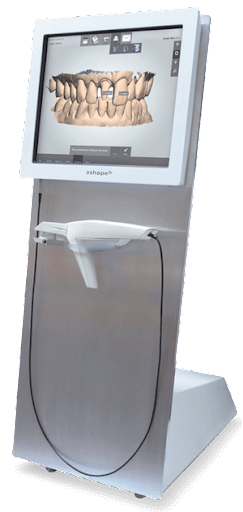When facing dental health issues, the choice between a crown vs. extraction is a critical decision for both dentists and patients. This comparison aims to guide you through the factors that influence the most effective treatment option, providing clarity and direction in your patient care strategy.
Understanding the Options
A dental crown is a cap placed over a damaged tooth to restore its shape, size, strength, and appearance. Crowns protect and strengthen tooth structures that cannot be restored with fillings or other types of restorations.
On the other hand, an extraction involves removing the tooth from the mouth. It’s generally considered a last resort, used when a tooth is too damaged or decayed to be saved, or when it poses a risk to other teeth and overall oral health.
When to Choose a Crown
Choosing a crown is often the preferred route when the tooth’s structure is compromised but still salvageable. Crowns are ideal for:
● Restoring a tooth that is significantly decayed but not lost.
● Protecting a weak tooth from breaking or holding together parts of a cracked tooth.
● Covering and supporting a tooth with a large filling.
● Holding a dental bridge in place.
● Covering misshaped or severely discolored teeth.
Crowns can be made from various materials, including porcelain, ceramic, and metal. The choice of material depends on the tooth’s location, the patient’s preference, and cost considerations.
When to Opt for Extraction
Extraction might be the more effective treatment in the following scenarios:
● Severe decay or infection that has destroyed a significant portion of the tooth and surrounding bone, making it impossible to salvage the tooth with a crown.
● Overcrowding where removing teeth is necessary to prepare the mouth for orthodontic treatment.
● Risk of infection from a tooth that is difficult to treat through other means, such as root canal therapy.
Weighing the Pros and Cons
Both treatments have their advantages and disadvantages. Crowns can preserve the natural tooth and are less invasive than extractions, which can lead to a quicker recovery. However, crowns might need to be replaced after some time due to wear and tear.
Extractions eliminate the immediate problem and might be less costly upfront. Yet, they can lead to longer-term issues such as shifting of adjacent teeth, changes in bite, and the need for replacement options like implants or bridges.
Crown vs. Extraction: Making the Decision
The decision between a crown vs. extraction should be based on a comprehensive evaluation of the patient’s overall oral health, the specific condition of the tooth, and the patient’s personal preferences and financial considerations. It’s essential to discuss all available options with the patient, including the long-term implications of each treatment.
At Next Dental Lab, we understand the importance of providing high-quality solutions for both crown and extraction cases. For dental practices looking to offer durable and aesthetically pleasing crowns, our crown & bridge solutions utilize the latest technology to create custom, precise fittings that meet the individual needs of your patients.
We are committed to supporting dental professionals with superior removables and partials, ensuring that you can make the best treatment decisions for your patients. With Next Dental Lab, you can count on high-quality standards, efficient service, and products that your patients will be satisfied with, helping you optimize productivity and patient care.

